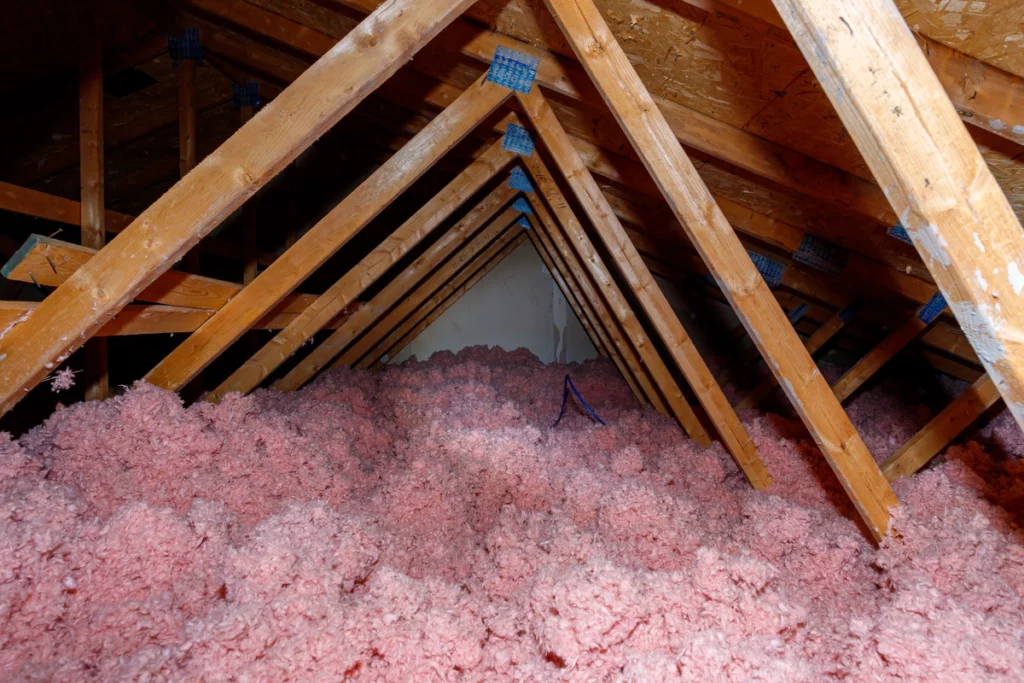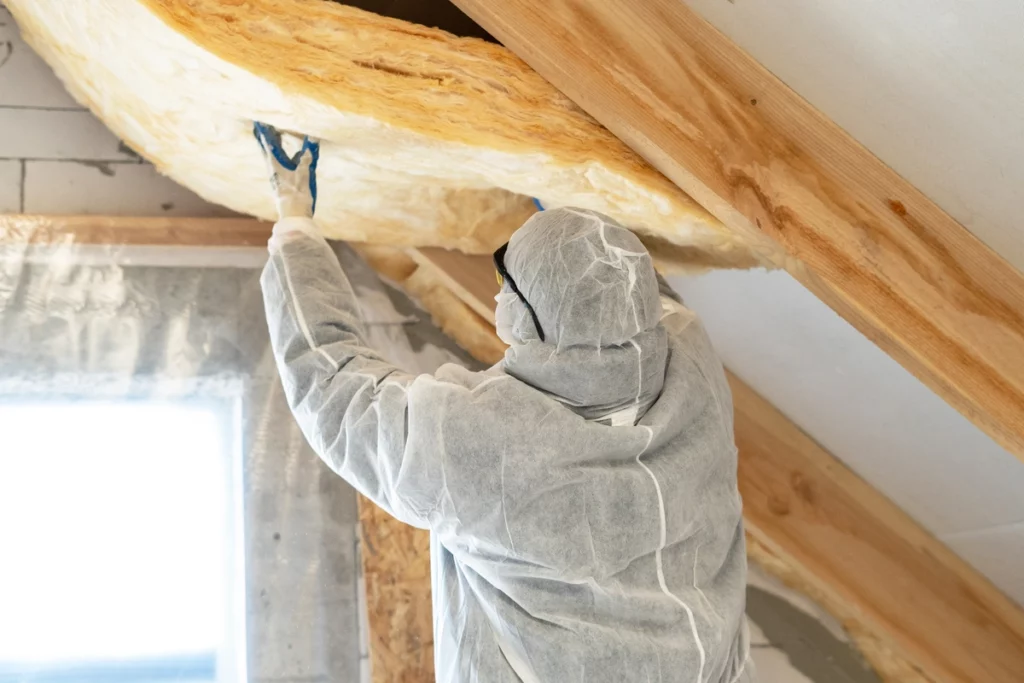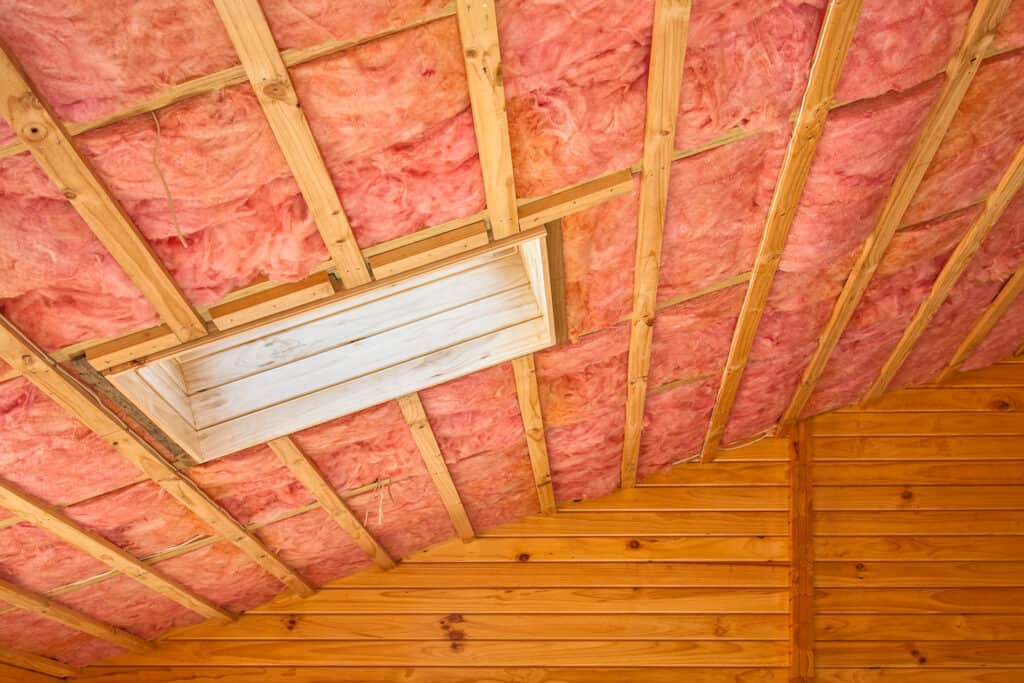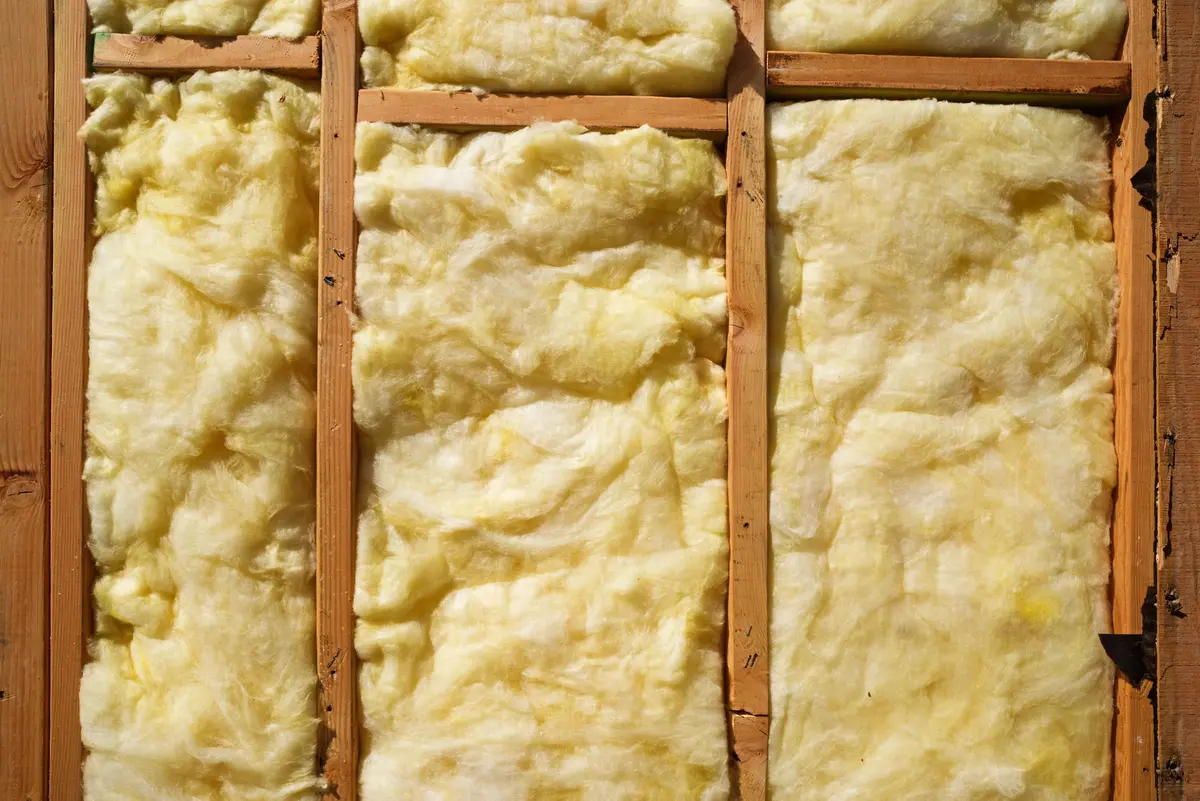When it comes to creating a more energy-efficient home, your roof plays a crucial role. Proper roof insulation helps regulate indoor temperatures, reduces energy bills, and enhances overall comfort.
Are you in need of quality roofing solutions?
But need tips for some of the aspects involved in your roofing system?
In this guide, we’ll explore the four best roof insulation types that can significantly improve your home’s energy efficiency. Whether you’re looking to upgrade your existing insulation or considering insulation for a new construction, these options will keep your home cozy and your energy bills in check.
What’s inside this blog:
- The importance of roof insulation for your home
- 4 best types of roofing insulation that boost energy efficiency in your home
- How to select the right kind of roof insulation for your climate and budget
- Benefits for each of the 4 types of roof insulation
Ready to become an expert on the key types of roof insulation? Start scrollin’!
When it comes to creating a more energy-efficient home, your roof plays a crucial role. Proper roof insulation helps regulate indoor temperatures, reduces energy bills, and enhances overall comfort. In this guide, we’ll explore the four best roof insulation types that can significantly improve your home’s energy efficiency. Whether you’re looking to upgrade your existing insulation or considering insulation for a new construction, these options will keep your home cozy and your energy bills in check.
Why Roof Insulation Matters 🌡️

Before we dive into the insulation types, let’s understand why roof insulation is essential:
- Temperature Control: Roof insulation helps maintain comfortable indoor temperatures year-round by preventing heat gain in summer and heat loss in winter.
- Energy Savings: A well-insulated roof can lead to significant energy savings, reducing heating and cooling costs.
- Comfort: Proper insulation keeps your home comfortable, with fewer drafts and temperature fluctuations.
- Environmental Impact: Improved energy efficiency also means a reduced carbon footprint, contributing to a greener environment.
4 Types of Roof Insulation 🏠
Below, we’ll go over 4 key types of roof insulation for your home.
1. Fiberglass Insulation
Fiberglass insulation is made from fine glass fibers, often pink or yellow in color. Keep in mind that proper installation is crucial to avoid gaps and ensure effectiveness. Likewise, this type of roofing insulation requires protective gear during installation due to small glass fibers.
2. Cellulose Insulation
Cellulose Insulation is made from recycled paper products treated with fire-retardant chemicals. It’s important to note that cellulose insulation can be susceptible to moisture and settling. As a result, this can affect its performance over time.
3. Spray Foam Insulation
Spray Foam insulation is expanding foam that hardens and creates an airtight seal. This type of insulation requires professional installation and can be more expensive than other insulation types.
4. Reflective or Radiant Barrier Insulation
Reflective or Radiant Barrier insulation typically consists of aluminum foil laminated to various materials. Keep in mind that this type of insulation works best in regions with hot summers, and it may not be as effective in colder climates.
Choosing the Right Roof Insulation

When selecting the best insulation type for your roof, consider the following factors:
Climate
The climate in your region plays a significant role. Insulation that works well in a hot climate may not be as effective in a colder one.
Budget
Determine how much you’re willing to invest in insulation. While some options may have higher upfront costs, they can lead to greater long-term energy savings.
R-Value
Pay attention to the insulation’s R-value, which indicates its thermal resistance. A higher R-value provides better insulation.
Moisture Resistance
If you live in a humid area, choose an insulation type that is resistant to moisture and mold.
Installation
Consider whether you’re comfortable with a DIY installation or if you need professional installation, as some insulation types require specialized techniques.
Benefits of Proper Roof Insulation
Proper roof insulation offers numerous benefits for homeowners:
- Lower Energy Bills: Reduced heating and cooling costs result in long-term savings on energy bills.
- Increased Comfort: A well-insulated home stays comfortable year-round, with fewer temperature fluctuations.
- Environmental Impact: Energy-efficient homes have a smaller carbon footprint, contributing to a greener planet.
- Extended Roof Lifespan: Insulation can help protect your roof from extreme temperatures, potentially prolonging its life.
DIY or Professional Installation? 🔧

While some homeowners may choose to tackle insulation projects themselves, others prefer to hire professionals. Here’s a quick overview of the pros and cons of each approach:
DIY Installation
Pros 👍
- Cost-effective.
- Flexibility in scheduling.
- Learn valuable home improvement skills.
Cons 👎
- May lack the expertise required for certain insulation types.
- Risk of improper installation, leading to reduced effectiveness.
Professional Installation
Pros 👍
- Expertise in handling various insulation types.
- Ensures proper installation for maximum effectiveness.
- May offer warranties for workmanship.
Cons 👎
- Higher upfront cost.
- Requires scheduling and coordination with a contractor.
Benefits for Each Insulation Type
Now that you understand the features for each type of roof insulation, let’s go over the unique benefits that each of them brings (besides enhanced energy efficiency).
1. Fiberglass Insulation

- Excellent thermal performance.
- Cost-effective option.
- Resistant to mold and moisture.
- Fire-resistant properties.
2. Cellulose Insulation
- Environmentally friendly and made from recycled materials.
- Effective at reducing air infiltration.
- Suitable for blowing into small spaces.
3. Spray Foam Insulation
- Outstanding thermal performance.
- Effective at sealing gaps and crevices.
- Long-lasting and moisture-resistant.
- Resistant to mold.
4. Reflective or Radiant Barrier Insulation
- Reflects heat away from the home, keeping it cooler in hot climates.
- Low maintenance and cost-effective in regions with hot summers.
Enhance Your Home’s Comfort and Efficiency
Proper roof insulation is a key element in creating an energy-efficient and comfortable home. Whether you choose fiberglass, cellulose, spray foam, or a reflective barrier, the right insulation can significantly reduce your energy bills, increase your home’s comfort, and contribute to a greener environment. Consider your climate, budget, and insulation needs when making your choice, and don’t hesitate to seek professional guidance if needed. With the right insulation, you’ll enjoy a cozier home and lower energy costs for years to come.
Contact our pro team of roofers at Clean Cut Roofing today! See firsthand why we’re the Most Loved contractor among homeowners in East Texas. We’ll kick off your next roofing project with a free quote!




